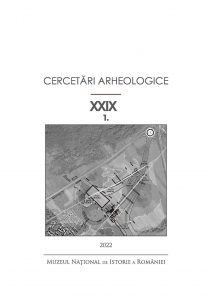The Beidaud Archaeological Microzone Research Project. Preliminary report on the 2020 and 2021 campaigns
The Beidaud Archaeological Microzone Research Project. Preliminary report on the 2020 and 2021 campaigns
Author(s): Valentin-Victor BottezSubject(s): Archaeology, Ancient World, Methodology and research technology
Published by: MUZEUL NAȚIONAL DE ISTORIE A ROMÂNIEI
Keywords: Beidaud; Archaic period; Roman rural settlement; paleoenvironment; funerary space;
Summary/Abstract: The paper presents the research project started by the University of Bucharest and the Eco-Museal Institute in Tulcea in the Beidaud Archaeological Microzone, Tulcea County (Romania), which contains four sites (Fig. 1): a Neolithic settlement pertaining to the Hamangia culture, in a location called la Grădină, south of the Beidaud commune; a fortified settlement dated to the second half of the 6th c. BC, located on the Calebair Hill, 2 km northwest of the Beidaud commune; a Roman rural settlement on the Dealul cu Cișmea, located 500 m northwest of the fortified settlement; and a tumular funerary space on the Dealul cu Cișmea. In 2021 and 2022, our team obtained important information through field surveys of the two sites on the Dealul cu Cișmea. Also, the entire area under scrutiny was topographically surveyed (topographic plan, orthophotoplan, 3D model). The University of Bucharest geoarchaeological team also extracted its first cores at the mouth of the Hamangia river. The archaeological field campaign had, as a main objective, the dating of the tumular funerary space, which was accomplished by the excavation of tumulus T1, dated to the 2nd-3rd c. AD.
Journal: Cercetări Arheologice
- Issue Year: XXIX/2022
- Issue No: 1
- Page Range: 35-56
- Page Count: 22
- Language: English

